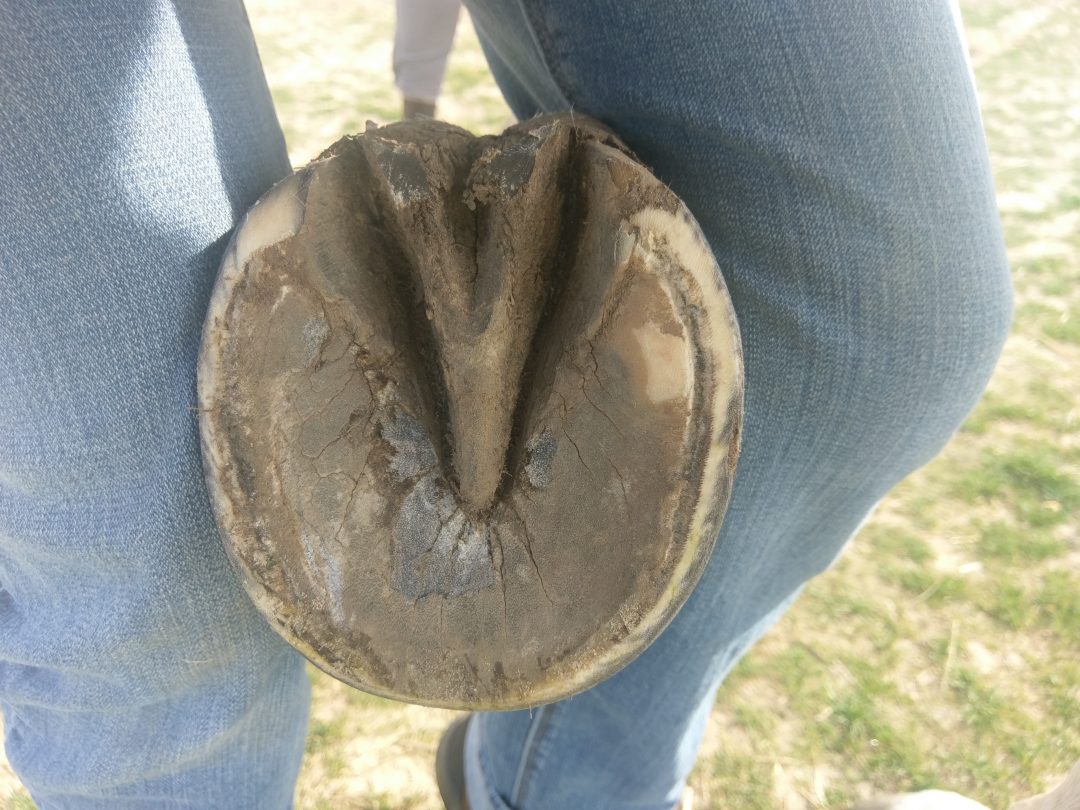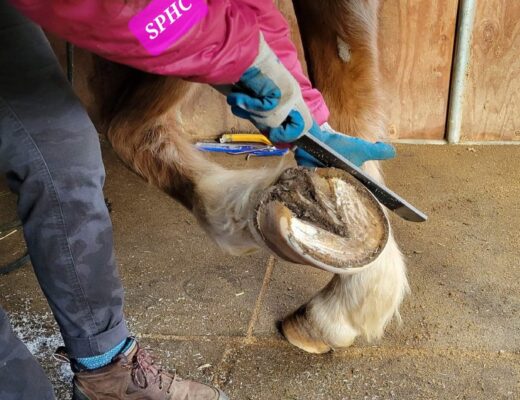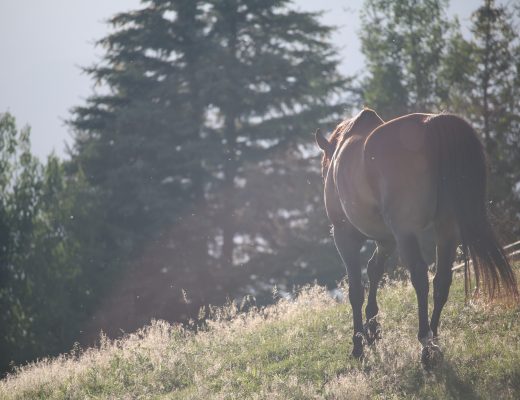Farriers shoe horses. They also trim horses, either before the shoe is nailed on or because the horse is barefoot. Barefoot trimmers trim horses, but some also shoe or apply glue on shoes/shells. So what’s the difference between a “barefoot trim” by a barefoot trimmer and a “pasture trim” by a farrier? I have heard farriers say “all trims are the same” and it’s the shoe that makes the difference – whether it’s nailed on skillfully or not. I completely disagree. All trims are not the same. Not all farriers trim the same, and not all barefoot trimmers trim the same. Not even someone trained in the same school or method will trim exactly the same as someone else. Shoeing and trimming is just as artistic as it is technical. Hoof care is both an art and a science.
This can get a little confusing because none of the terms are very clear, and everyone trims differently, but here goes!
A Pasture Trim
I have heard many farriers and owners refer to horses who are being trimmed by farriers as receiving “pasture trims.” I don’t know where that term came from, but it’s so common I figure I can use it here. In my personal experience, the pasture trims I have seen leave the horse with a longer toe, lower heel than before the trim, less frog/sole than before the trim, a flatter foot, and no roll or bevel around the hoof wall. I have seen lots of horses in shoes with the same problems, and the trim before the shoe is creating these problems, not just the shoe by itself. The trim, whether a shoe is to follow or not, is the foundation of good hoof care. I have often seen other farriers (and sometimes trimmers too) remove material where I would have left it, and left material where I would have taken it. So in some ways, I consider a “pasture trim” the opposite of how I would do it. I have watched farriers pay more careful attention to the horses they are shoeing, and less attention to detail on the horses they are just trimming. Some offer up the attitude that “the trim doesn’t matter.” From talking with other trimmers and horse owners, this is extremely common but I will admit I have not had the chance to watch really good farriers work. So I know they must be out there! This is just what I have seen so far.
A Barefoot Trim
So technically any trim on a barefoot horse’s hoof is a barefoot trim, but most of the horse community uses the term “barefoot trim” or “natural trim” to differentiate from a “pasture trim” or a trim by a farrier, though there are farriers who do good barefoot trims. In my experience, most barefoot trims (done by a trimmer who is competent), leave more sole and frog, remove more toe, leave more heel, and roll the wall all the way around the hoof (a mustang roll or bevel).
Of course, this is not always the case. It really does depend! Sometimes you have to do a rehab trim, and that looks different than a maintenance trim. Sometimes the heel is too tall, so it needs work. Sometimes the frog is dead or thrushy, and it needs to be trimmed. Sometimes sole is flaking off or is retained and needs to be addressed. But in general, I have seen some farriers, trimmers, and believe it or not, vets, routinely remove heel/frog/sole when unnecessary “just because.”
I think the main difference that I have seen in “pasture trims” vs. “barefoot trims” is a level of attention to detail and caution in the work. I treat every horse the same – whether they are a pasture ornament or a show horse. I am going to address the issues and imbalances in each foot to the best of my ability, taking into consideration all the factors of that day.
Different Methodologies
I am in a barefoot trimmers Facebook group with over 8,000 members in it and most are professional hoofcare providers. If you post a question in there, you’ll be overwhelmed with the difference in opinions and suggestions. There are various schools of thought and methods in the barefoot world. Some barefoot trimmers have trained within a specific method, others take what they like and use what works. There are VAST differences in the trim from one group to the next.
So the trim does matter, and all trims are not the same. The key for owners is to find someone who you can trust. Is your horse sound and happy? Are they developing issues faster than they can heal or are they maintaining good health? If there is any sort of niggling thought in your head, go with your gut. I’ve learned the hard way not to ignore issues when they are little. Don’t get stuck in one method or with one person if it’s not going well. And don’t give up too soon unless your gut tells you it’s not working out.





No Comments